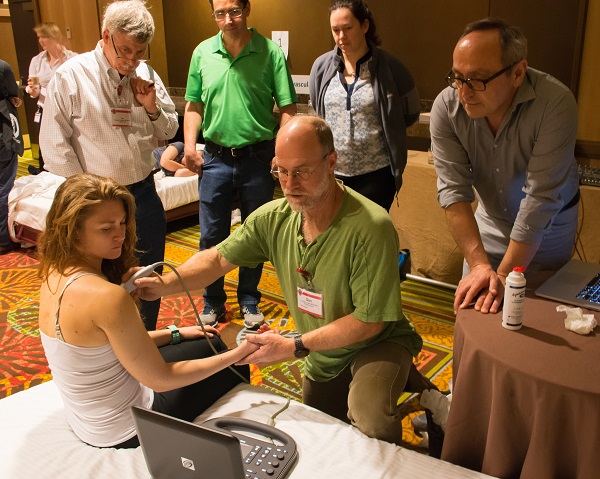MARCH 9-13, 2019 • CAESARS PALACE • LAS VEGAS, NV


This year’s AAEM pre-conference ultrasound course has been fully updated to reflect participants’ wishes in designing the ultimate ultrasound course. Beginner ultrasound course participants have requested additional focus on echocardiography and central line placement. This year, didactic lectures will provide state of the art audiovisual presentation by veteran faculty, followed by small groups of a maximum four participants / one instructor allowing each individual participant ample hands-on time for ultrasound scanning. Each year after reviewing participant comments, we construct a new course to address their needs.
← Back to all pre-conference courses

Note: The Ultrasound — Beginner Course is full at this time. To be added to the wait list, please email Zenita Hill at zhill@aaem.org. In your email, please include the five modules you are interested in.
The American Academy of Emergency Medicine (AAEM) designates this live activity for a maximum of 6.25 AMA PRA Category 1 Credit(s)™. Physicians should claim only the credit commensurate with the extent of their participation in the activity.
Special Discount if taking both Ultrasound – Beginner and Advanced
Saturday, March 9, 2019
|
8:00am-8:15am |
Welcome |
|
8:15am-9:00am |
Image Acquisition and Instrumentation |
|
9:00am-9:45am |
Trauma - Extended Focused Assessment with Sonography for Trauma (eFAST) Examination |
|
9:45am-10:30am |
Echo in the ED |
|
10:30am-10:45am |
Coffee Break |
|
10:45am-11:30am |
Aorta & IVC |
|
11:30am-12:15pm |
Vascular Access - Central and Peripheral Lines |
|
12:15pm-1:00pm |
Lunch (Included) |
|
1:00pm-1:45pm |
Hands-on Module 1- Echo & IVC |
|
1:45pm-2:30pm |
Hands-on Module 2 - eFast |
|
2:30pm-2:45pm |
Coffee Break |
|
2:45pm-3:30pm |
Hands-on Module 3 - Vascular Access |
|
3:30pm-3:45pm |
Wrap up & Adjourn |
Echo & Aorta
eFAST
Vascular Access
Katharine Burns, MD FAAEM
Assistant Director of Emergency Ultrasound, Dept. of Emergency Medicine, Advocate Christ Medical Center, Oak Lawn, IL
Michael J. Lambert, MD RDMS FAAEM
Fellowship Director Emergency Ultrasound, Dept. of Emergency Medicine, Advocate Christ Medical Center, Oak Lawn, IL
James AP Connolly, MBBS FRCS(Ed) FCEM
Consultant ED, Royal Victoria Infirmary, Newcastle-upon-Tyne, NE1 4LP, United Kingdom
Robert Jarman, MBBS MSc FRCSE FCEM
Visiting Fellow (Point of Care Ultrasound), Teesside University; Consultant in Emergency Medicine, Queen Elizabeth Hospital, Gateshead, United Kingdom
Hein H. Lamprecht, MD
Programme Director, Emergency Ultrasound, University of Stellenbosch, Cape Town, SA
Joseph P. Wood, MD JD RDMS MAAEM FAAEM
Mayo Clinic, Scottsdale, AZ